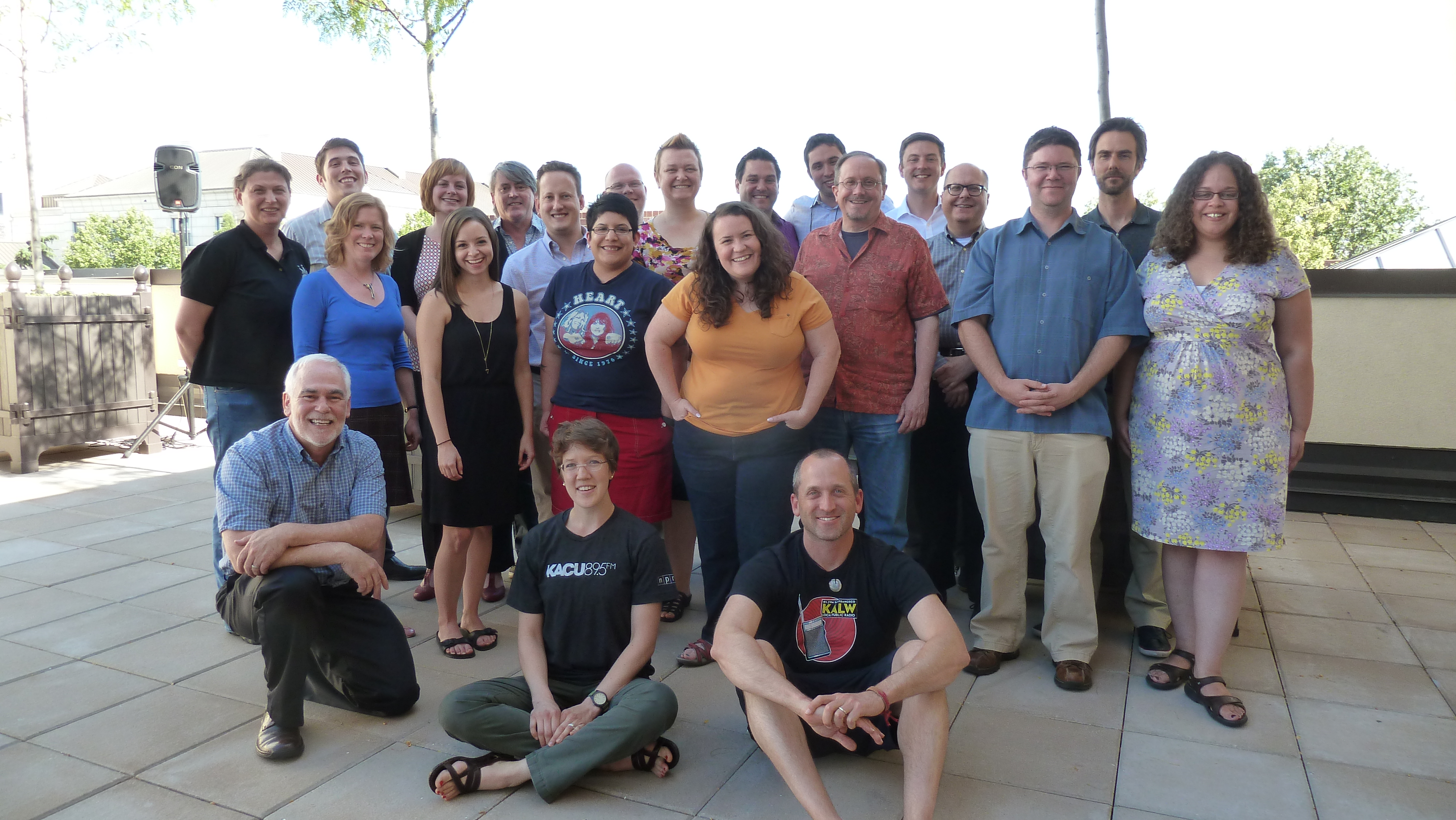We’ll look back on this old Barney: an early input-output gizmo you could hug
Dolls have talked for years, but it was Microsoft’s ActiMates Interactive Barney that became a full-fledged peripheral for the computer–with hints of the nifty and bizarre stuff that will flood the world when digital broadcasting begins.
Next month, at Toy Fair ’98 in New York City, the company is expected to announce the addition of an Arthur doll to the ActiMates line, and Children’s Television Workshop will introduce a similar smart doll of its own.
 And if the technology inside these little wriggling, sensing and talking input-output dolls develops as rapidly as other digital devices do, in a few years we’ll see smarter descendants become tools and toys for older kids and adults as well.
And if the technology inside these little wriggling, sensing and talking input-output dolls develops as rapidly as other digital devices do, in a few years we’ll see smarter descendants become tools and toys for older kids and adults as well.
For kids in the 2-3 range, and for Microsoft, Barney was enough of a phenomenon for now. Though Sesame Street‘s much cheaper “Sing & Snore Ernie” easily outsold it, hundreds of thousands of Barneys galumphed out of the stores. Sales were 20 percent above projections, Microsoft said.
Before Christmas, a panel of children picked the ActiMate as the Toy of the Year for Disney’s Family Fun magazine. Consumer Reports called it the “breakout hit” of 1997 (the batteries last 18 hours). And Parents magazine named it the top toy of the year.
Though some adults shuddered at the thought of kids cozying up to a 2 megabyte chip, it was creepier to them than to children, says Roberta Furger, author of Does Jane Compute? “I’ve watched a lot of kids play with Barney. They never misunderstand that it’s anything but a toy.”
The technology lets kids use a well-loved character as a guide and point of contact with the computer as they explore computing, says Glenda Revelle, v.p. for interactive products at Children’s Television Workshop. With Ernie following “Tickle Me Elmo,” CTW has been involved with winning toys for two years in a row and wants to extend its streak. (CTW’s interactive group was home for Interactive Barney designer Erik Strommen before he moved to Microsoft, Revelle said.)
For its entry into the toy business, Microsoft began working with Lyrick Studios in summer 1995. Mary Ann Dudko, Lyrick’s director of educational research and development, periodically flew to Seattle for brainstorming. She said it felt like Microsoft had 100 people on the project.
The resulting product line offers three levels of smarts:
- For $99, you get a standalone doll that can play 12 games and sing 17 songs.
- For an extra $59, there’s a TV Pack radio transmitter that relays instructions to the doll from encoded Barney programs playing on a TV set or VCR. An estimated 40 percent of buyers shelled out for the TV Pack.For the broadcasts, many PBS-member stations play special Barneytapes encoded with the ActiMates signal in the horizontal overscan of the picture–the usually unseen far left edge of every line. By November, half the country could receive encoded signals from participating stations, says Jackie Weiss, c.e.o. of PBS National Datacast, a revenue-generating arm of the network. (Stations receive a fee for passing on the ActiMates signals.) Additional stations now being tested could bring coverage to 97 percent.
- The broadcast link makes Barney one of the most intimate and interesting convergences of computing and the media, observes Mark Gibbs, a columnist with a computer industry magazine, Network World, who tested Barney last year. The 19 megabyte-per-second DTV bitstream will provide more capacity to feed Barney’s successors than the present analogue signal.
- For $59, you can also buy a PC Pack that uses low-power radio to communicate between the doll and a personal computer playing one of four special Barney CD-ROMs. The child communicates with Barney largely by keyboard, but if she squeezes his hand while playing a computer game, he’ll take turns with her at the game.
Otherwise, the doll itself is lots better at output than input, putting out all those jolly songs plus the little bodily convulsions that go with them. You might even be able to get Microsoft’s chip to deliver a comment on Attorney General Janet Reno if you knew which paw to squeeze.
Gibbs at Network World expects Barney’s descendants to have more impressive input devices, such as image sensors and voice recognition, and possibly the capacity to exhibit and learn behavioral traits. And, instead of receiving instructions from the owner’s computer or TV, they may pick up control broadcasts directly from over-the-air signals.
At MIT’s famous, industry-funded Media Lab, Prof. Bruce Blumberg wants future toys to put the child in a more active role. Instead of moving a computer mouse, a child uses Blumberg’s experimental stuffed beaver to manipulate an animated beaver on the computer screen. The kid becomes the beaver’s conscience, directing it and also learning from the computer about the society of the beaver pond.
“My sense on Interactive Barney is that it’s really an interesting first step,” says Blumberg. Microsoft was “absolutely right” in developing the technology, he says. “It’s worth spending the money now to control the standard.”
Down the hall in the Media Lab, Prof. Justine Cassell is likewise giving kids an active role–having them create their own “wise” storytelling characters on the computer, write stories for the sages to tell, and specify movements for the doll to make. A girl created Mother Nature. An adult created a rabbi with a full Yiddish vocabulary. A boy created Shaquille O’Neal.
Cassell sees the relationship among the child, the stuffed animal and the computer as a “magic triangle.”
Another use of the digital animal, she suggests, is a digital storage device that records a person’s stories in childhood and becomes, years later, a treasured keepsake in adulthood.
It may be harder to figure out how to amuse or educate older children or adults with digital figures. To work with older people, the devices will need more computing capacity to react to users’ instructions and handle more open-ended situations, says Furger.
Naturally, there could be a zillion shoot-em-up games, using joysticks that have arms and legs. And more than a few observers expect hot-and-heavy R&D by the sex industry, which quietly fired up consumer interest in home video and the Internet.
In Current‘s limited round of interviews, two technologists suggested that someone make automated TV-viewing companions like the wise-cracking front-row robots on cable TV’s Mystery Science Theater. “If you like that kind of sophomoric humor,” adds Mark Gibbs.
Meanwhile, product developers have a case of cognitive dissonance to deal with: they’ll have to explain to some customers why Barney is on the screen and in their hands at the same time, says David Felland, engineering director of WMVS/WMVT in Milwaukee. His kids, ages 2 and 4, wanted to know: “Why is Barney talking to Barney? This doesn’t make sense, Dad!”
EARLIER STORY
RELATED LINK
ActiMates Interactive Barney section of Microsoft’s web site.







